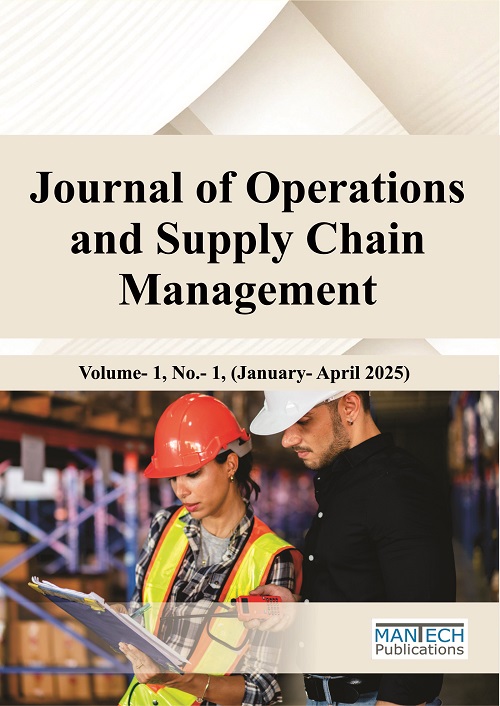Introduction
Have you ever wondered how much artificial intelligence (AI) is influencing the world of books, journals, and research papers? If you’re a student, researcher, or even just someone curious about technology, it’s impossible to ignore how AI in academic publishing is reshaping the way knowledge is created, reviewed, and shared.
Not too long ago, publishing a research paper meant countless hours of manual formatting, editing, and waiting months (or even years) for peer reviews. But things are changing fast. Today, AI tools can speed up publication processes, detect plagiarism within seconds, and even help predict which research might make the biggest impact.
So, what does this mean for you as a student? Let’s explore how AI in academic publishing is opening new opportunities, improving quality, and changing the entire ecosystem of scholarly communication.

1. Smarter Research Discovery: Finding the Right Papers in Seconds
If you’ve ever spent hours scrolling through Google Scholar or JSTOR trying to find the perfect reference for your project, you know how overwhelming it can be. Thousands of papers, similar titles, and too much jargon—it’s exhausting.
This is where AI makes life easier.
AI-powered search engines and recommendation systems now analyze millions of academic papers to find the most relevant ones for your topic. Tools like Semantic Scholar, Scite, and Elicit use algorithms to understand the meaning behind your query rather than just matching keywords. They even summarize research findings and highlight key insights for you.
Imagine searching for “climate change impact on agriculture,” and instead of getting random papers, you get a list of the most cited, most relevant, and most recent studies—all organized neatly. That’s AI working behind the scenes to make your academic life smoother.
2. AI-Driven Writing and Editing: Say Goodbye to Grammatical Nightmares
Let’s be honest—academic writing can be tough. From strict formatting to referencing styles like APA or MLA, there’s a lot to handle. And even after all your effort, grammatical errors or unclear sentences might sneak in.
AI writing assistants like Grammarly, ChatGPT, and QuillBot have changed that completely. These tools don’t just correct spelling—they analyze sentence clarity, tone, and structure. Some can even rephrase complex ideas into clear, readable sentences without changing your meaning.
For researchers, tools like Writefull and Trinka AI specialize in academic editing. They’re trained on millions of published papers, which means they understand what “academic tone” really looks like. This helps authors—especially non-native English speakers—refine their writing for journals with ease.
The result? Clearer, more polished manuscripts that are ready for submission faster than ever.

3. Faster Peer Review: How AI is Speeding Up the Approval Process
One of the most frustrating parts of academic publishing is the peer-review process. It’s essential for maintaining quality, but it can take months, even for short papers. Reviewers are overloaded, and journals often face long backlogs.
Enter AI.
AI tools can now perform automated pre-reviews, checking for issues like missing citations, improper methodology descriptions, or formatting errors—before human reviewers even see the paper. This saves valuable time and lets experts focus on the content quality instead of technical details.
Some journals use AI to match papers with the most suitable reviewers, based on expertise and research area. It’s like having an intelligent assistant that knows exactly who’s best to review your work.
The result? Faster review cycles, fewer bottlenecks, and more efficient publication timelines.
4. Fighting Plagiarism and Fake Research with AI
Plagiarism and fake research are major concerns in academic publishing. With the rise of online content, it’s become easier than ever for dishonest authors to manipulate or copy data. Thankfully, AI is stepping in as a digital watchdog.
Advanced plagiarism detection tools like Turnitin, iThenticate, and Copyscape AI go beyond matching text—they can now detect paraphrased or AI-generated content that traditional tools might miss. They compare manuscripts against billions of sources to ensure originality.
Even more impressive, AI can detect image manipulation and data fabrication, which are common forms of academic misconduct. For example, AI algorithms can identify duplicated images in research papers, ensuring that scientific results remain trustworthy.
For honest students and researchers, this is great news—it means your hard work stands out in a fair, transparent publishing world.

5. Predicting Research Impact: AI as a Crystal Ball for Academic
Wouldn’t it be amazing if you could know whether your paper might make a big impact before publishing it?
AI tools are starting to make that possible.
By analyzing citation patterns, social media mentions, and the quality of references, AI can predict how influential a paper might be. Publishers and universities use these insights to identify groundbreaking research early on. This not only helps researchers gain visibility but also helps funders and institutions focus on promising work.
For students, this means AI could soon recommend the most influential papers to read in your field or guide you toward trending research areas to explore for your next project.
6. Smarter Open Access Platforms: Democratizing Knowledge
Open Access publishing—where papers are freely available online—is growing rapidly. However, managing open-access submissions, indexing, and copyright issues can be complex.
AI now helps automate these processes. It can categorize papers, manage metadata, and ensure that all copyright and licensing requirements are met automatically. This has made it easier for publishers to offer open access options without long delays.
More importantly, AI-powered indexing ensures that open-access papers are easily discoverable by students and researchers worldwide, making quality education resources available to everyone, not just those at elite universities.
7. The Rise of AI as a Co-Author: Helpful or Controversial?
You might have seen the headlines—“AI writes a research paper.” While it sounds futuristic, it’s already happening.
AI tools are being used to summarize literature reviews, suggest hypotheses, and even draft sections of research papers. But this has also raised questions: Should AI be credited as a co-author? Can we fully trust AI-generated data?
Most journals agree that AI should not be listed as an author but can be acknowledged as a tool. What’s important is transparency—researchers should clearly mention when AI has assisted in writing or analysis.
For students, this is a valuable reminder: AI can be a powerful assistant, but critical thinking, creativity, and ethical responsibility still rest with you.
8. AI and the Rise of Data-Driven Publishing Decisions
Publishers are now using AI to analyze massive amounts of publication data to understand reader behavior—what topics are trending, which research areas are underrepresented, and how long readers engage with certain papers.
This helps them decide which manuscripts to prioritize and where to focus their editorial efforts. For authors, this means your paper might reach the right audience faster because AI understands what readers want.
And for students, this translates into access to more relevant, timely content—papers that match the world’s current academic and social priorities.
9. Challenges of AI in Academic Publishing: It’s Not All Perfect
Of course, it’s not all smooth sailing. While AI offers incredible advantages, it also brings a few challenges.
- Bias in AI Algorithms: If the data used to train AI systems is biased, the recommendations or evaluations might be unfair.
- Overreliance on Technology: Students might lean too heavily on AI for writing or research, leading to less original thinking.
- Ethical Concerns: There’s still an ongoing debate about data privacy, copyright issues, and whether AI-generated content can be trusted.
These challenges remind us that AI should be treated as a tool—not a replacement—for human intellect and integrity.

10. The Future of AI in Academic Publishing: What’s Next?
So, what’s on the horizon?
Expect even more personalized and interactive publishing experiences. Imagine AI tools that summarize every new research paper for you weekly, or chatbots that answer your academic questions instantly using verified journal sources.
We might also see AI-powered peer-review assistants that not only check for plagiarism but also analyze whether a study’s conclusions truly match its data. Some researchers are even experimenting with AI-generated journals—fully automated systems that collect, review, and publish new studies in record time.
For students like you, this future means less time searching and more time learning, questioning, and creating new knowledge.
Conclusion
The rise of AI in academic publishing is one of the most exciting transformations happening in education and research today. It’s making the process of discovering, writing, and sharing knowledge faster, smarter, and more accessible than ever before.
But while AI brings powerful advantages—like speed, precision, and accessibility—it also asks us to stay thoughtful and ethical in how we use it. After all, technology should amplify human creativity, not replace it.
So, the next time you search for a paper, write an assignment, or edit your thesis, remember—you’re already part of this AI-powered future of academic publishing. The question is: how will you use it to your advantage?
FAQs:
1. How is AI used in academic publishing today?
AI is being used to automate peer reviews, check plagiarism, suggest suitable journals, and improve research visibility. It also helps researchers write, edit, and format papers faster and more accurately.
2. Can AI write or publish research papers on its own?
While AI tools can draft and summarize content, they can’t ethically publish research as authors. They’re great for helping with writing and analysis, but the final ideas, interpretation, and approval must always come from human researchers.
3. What are the benefits of AI in academic publishing for students?
AI helps students save time by finding relevant papers quickly, improving writing quality, checking references, and summarizing large volumes of research. It makes learning and academic writing much easier and more efficient.
4. Is using AI for academic writing considered plagiarism?
Using AI responsibly to assist with grammar, summarization, or idea structuring is acceptable—if it’s acknowledged properly. But submitting AI-generated work as your own without citation or transparency can be considered plagiarism.
5. What is the future of AI in academic publishing?
The future looks promising! AI will make publishing faster, more transparent, and personalized. Soon, students and researchers could have AI tools that summarize new studies instantly or even predict which topics will trend in their field.










Leave a Reply